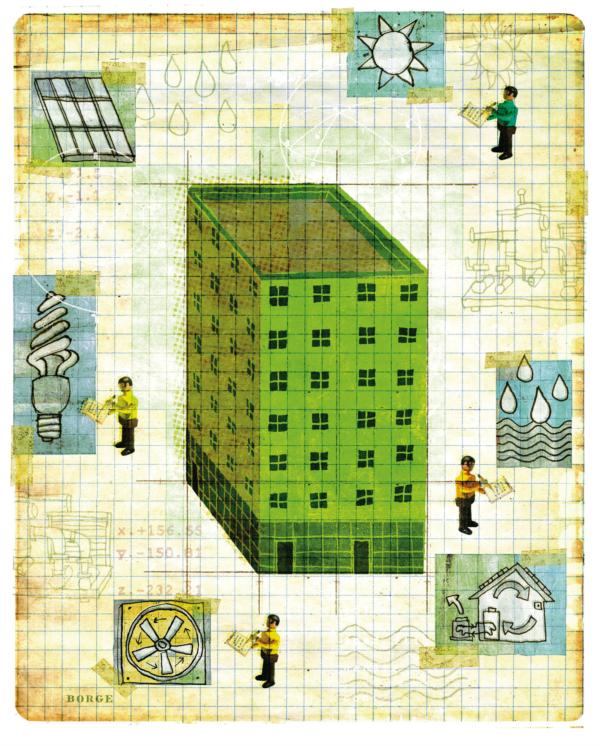Bunker says multifamily as a whole can grin and bear such changes or proactively jump into the evolution of green. Either way, he suggests the development and deal flow downturn in the industry is a no-more-excuses time for multifamily to finally apply themselves to green, whether there’s immediate proof of its payoff or not. “More and more projects are heading that way, which is good for all of us in as much as we are sensitive about [local and global] environmental conditions,” Bunker says. “Beyond that, I think green and sustainability will be mainstream within the next 10 years. There will be a time when it will quite simply be ridiculous not to incorporate most of these aspects into a project.”
Data-supported or not, it seems to all involved as if that time is coming sooner rather than later. [M]
8 Editor’s Note: For expanded green coverage, including a look at net zero energy, visit www.multifamilyexecutive.com.
Hot Stuff
Is solar power the next big thing, or just the next big expense?
The sun’s surface is 5,500 degrees centigrade, and although solar rays travel some 93 million miles before burning through the atmosphere and hitting the Earth’s surface, there’s still plenty of energy left in all of that heat to power the entire planet, if not a couple of apartment communities. “It just makes sense to me that eventually every community will have photovoltaic panels on it and be able to generate its own electricity,” says Jeff Bunker, president of San Diego-based multifamily builder Wermers Cos. “It seems like the industry is moving towards solar. It makes a lot of sense and pays for itself over the long run.”
Over the very long run, say critics, who point to the huge upfront costs of purchasing and installing photovoltaic panel arrays that typically need to be amortized over a 20-year period before providing a return on investment.
That lengthy time frame has made solar an attractive option for affordable housing projects requiring a long-term hold for tax credit funding, but when it comes to merchant building and market-rate multifamily owner/operator models, solar “just isn’t there yet,” contends Martin Sprang, a group and division director at Denver-based REIT AIMCO. “I am not an advocate of programs that don’t provide a return. Why would you spend 25 cents a kilowatt-hour for solar when you can conserve energy and work with what you already get off the grid for 10 cents to 12 cents per kilowatt-hour?”
Solar fans recognize the high up-front investment but emphasize the value of fixing energy costs and say incentive programs can drastically reduce the cost of hot-wiring.
“We realize there are some very basic concerns—we spend our time educating people about them,” says Richard Raeke, director of project finance at San Diego-based Borrego Solar Systems. “In California, the Multifamily Affordable Solar Housing (MASH) program has carved out $108 million for affordable housing. With an average common load of 15 kilowatt-hours, MASH could feasibly fund 600 systems. Even for market-rate developers, there are programs out there.”
